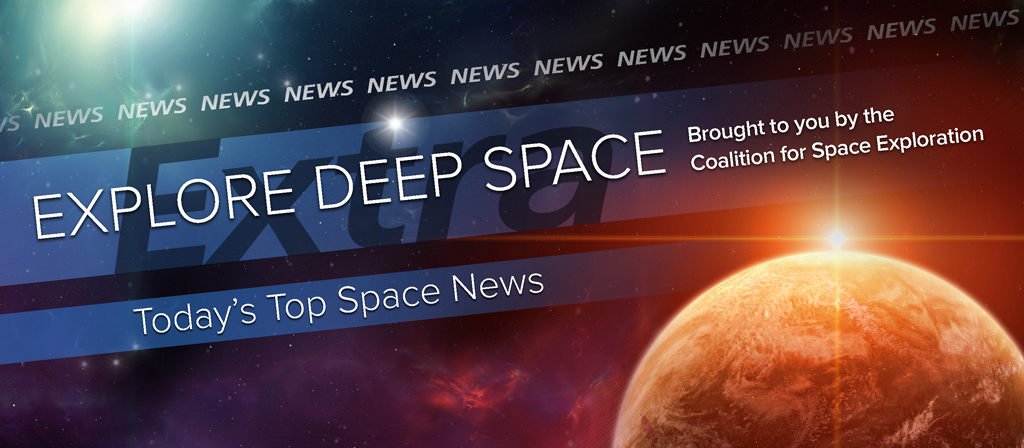In Today’s Deep Space Extra… Russia adjusts space exploration plans as budgets shrink. U.S. scientists offer evidence for 9th planet, a “super Earth” well beyond Pluto.
Human Deep Space Exploration
Russian space agency scales back plans as crisis shrinks budget
Reuters (1/20): A tanking global oil price is taking a toll on Russia’s space flight aspirations. Plans to place a cosmonaut on the moon are being rolled back from 2030 to 2035.
Russia delays new space program plan until March
The Moscow Times (1/20): The Russian government intends to complete and adopt a delayed space policy plan by March, according to the head of the Russian spaceflight corporation Roscosmos. Spending plans of $42.5 billion (U.S. equivalent) over the next decade will fall to $17.5 billion, according to the report.
Russia to spend over $300 million on developing super heavy rocket
TASS of Russia (1/20): Despite cutbacks in future space programs, Russia intends to invest just over $300 million in the development of a super heavy lift rocket, a launch vehicle that could place 20 metric tons in lunar orbit, 80 metric tons in low Earth orbit.
Space Science
Ninth planet may exist beyond Pluto, scientists report
New York Times (1/20): Astronomers from the California Institute of Technology believe observations of distant Kuiper Belt objects point to the presence of an undiscovered “super Earth,” a planet with a mass between that of the Earth and Neptune. Findings were presented in the latest edition of the Astronomical Journal.
Case made for ‘ninth planet’
BBC of London (1/20): NASA chief scientist Ellen Stofan expresses skepticism for a “super Earth” beyond Pluto, citing an absence of direct observations. The nameless object would take 20,000 years for a trip around the sun. “Is it there, is it not?” said Stofan in an interview. “Are there other explanations?”
Time running out on comet lander
Science (1/20): Philae, the intrepid lander dispatched to the surface of the comet 67P/Churyumov-Gerasimenko by the European Space Agency’s Rosetta mission spacecraft, may be lost forever. Philae touched down on the comet in November 2014 but has communicated little in the meantime. The comet has since rounded the sun. Falling temperatures on the outbound trajectory could be too extreme for a wake up, according to mission officials.
WFIRST: Work on NASA’s ‘spy telescope’ begins
Discovery.com (1/20): NASA’s once-troubled James Webb Space Telescope is on a course for a late 2018 liftoff. Confident of the preparations, NASA is ready to begin work on the next deep space observatory, WFIRST. WFIRST will incorporate optics from a previous U.S. National Security Agency reconnaissance satellite to study planets beyond the solar system.
Low Earth Orbit
It’s official: 2015 ‘smashed’ 2014’s global temperature record, it wasn’t even close
Washington Post (1/20): Scientists point to a strengthening El Nino late in the year as a factor in the record global heat measured in 2015. NASA and NOAA offered separate data sets for the past year on Wednesday. Records go back more than 130 years.
China plans new Space Station, two new rockets in 2016
Spacepolicyonline.com (1/21): China is preparing to launch Tiangong-2, the country’s second space station, as well as its sixth launch of astronauts in 2016. Tests of the powerful new Long March 5 and more modest Long March 7 launch vehicles are planned this year as well, according to the China Aerospace Science and Technology Corp.
New U.S. kill vehicle will fly in 2018, take on its first target in 2019
Space News (1/20): The U.S. Missile Defense Agency will pursue an aggressive schedule in the design of a new “kill vehicle,” according to U.S. Navy Vice Adm. James Syring, who heads the agency. A new vehicle to defend against a missile attack could be fielded by 2020.
Commercial to Low Earth Orbit
NASA outlines Commercial Crew goals critical for upcoming test flights
AmericaSpace.com (1/21): NASA’s Commercial Crew Program set out 2016 milestones on Wednesday for its industry partners, Boeing and SpaceX, if they are to achieve their first test flights of the CST-100 Starliner and crewed Dragon in 2017. “Our success depends on the work we’re doing now to make sure every component and system that will go into these vehicles is safe and reliable for the future,” said NASA’s Kathy Leuders who manages the endeavor.
Suborbital
Tucson faced stiff competition to keep World View
Parabolic Arc (1/20): The emerging high-altitude balloon passenger company World View was lured by competitors in New Mexico and Florida before it reached agreements with state, county and local officials earlier this week to base its operations in Tucson, Ariz. The company’s high-altitude balloon flights could begin to carry researchers and paying tourists in 2017.

